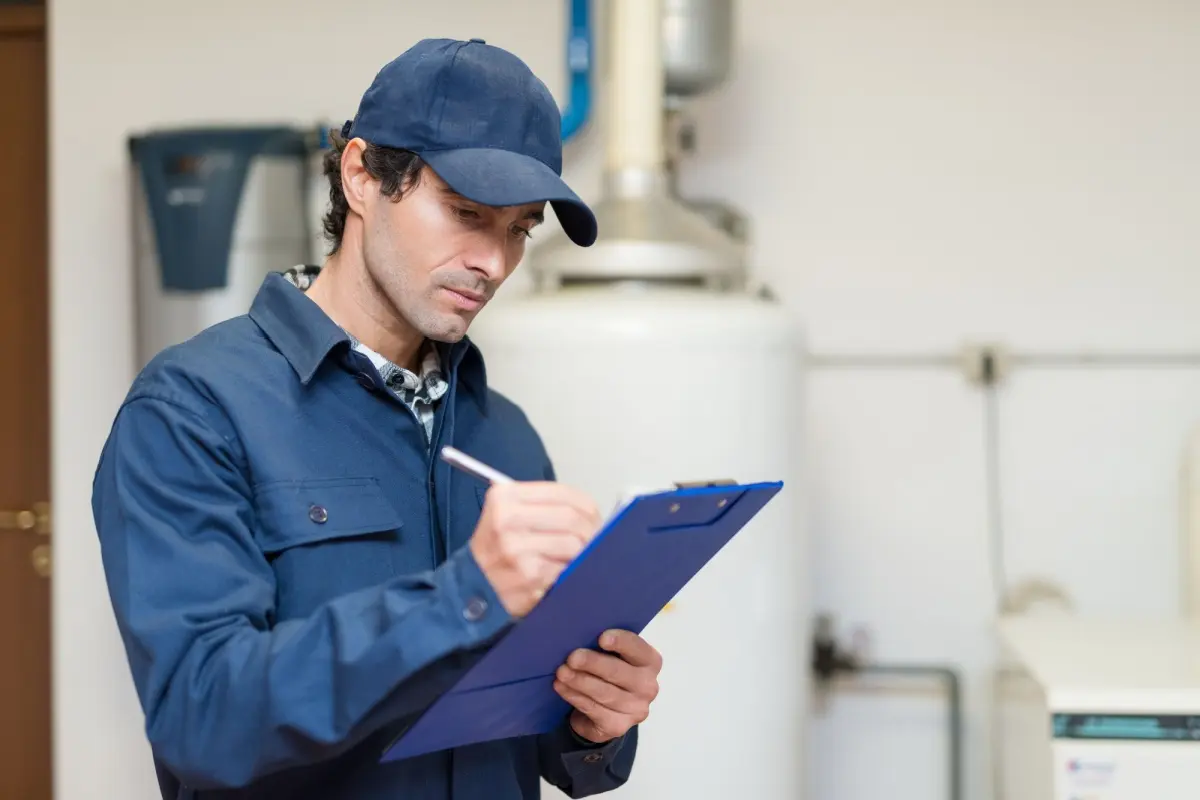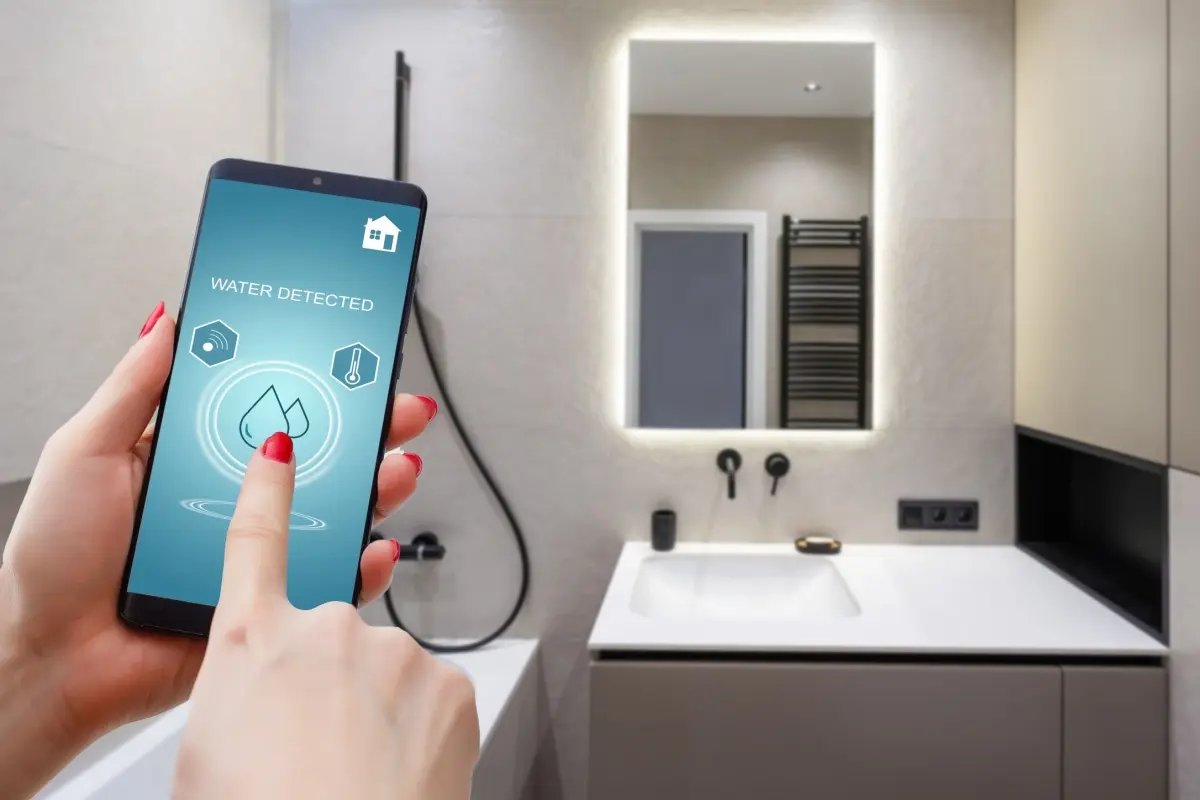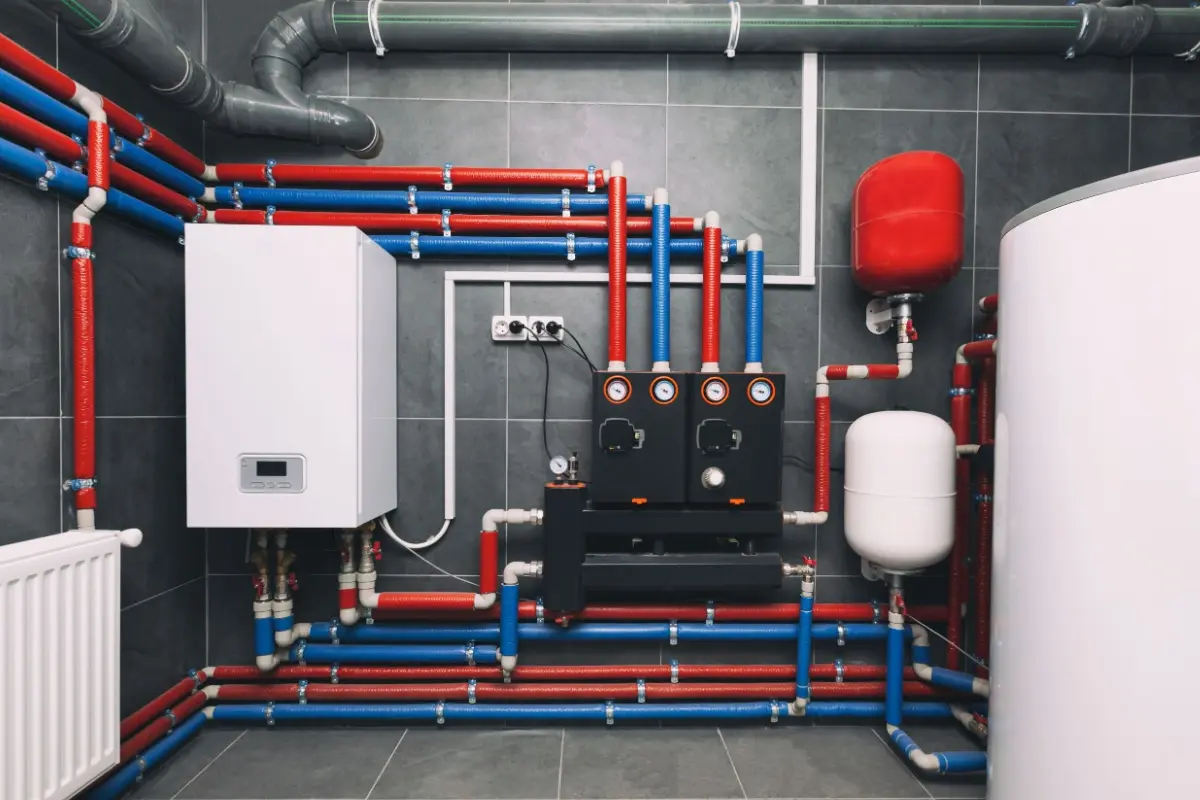What’s the secret to running a successful plumbing business? There’s no hard-and-fast playbook you can follow, but one way to remain competitive is to adapt to industry trends. The plumbing industry isn’t static; it’s constantly evolving — the more a business keeps up with these new trends, the more successful it can be.

To help you stay ahead of the competition, we’ve compiled a list of the top plumbing industry trends you should know and adopt.
Plumbing Industry Statistics
Currently, there are over 110,000 U.S. plumbing businesses in operation. Together, they generated over $120 billion in revenue and employed over 550,000 technicians. Industry revenue and employment is expected to continue their upward trend moving forward.
5 Plumbing Industry Trends of 2025
Is your plumbing business looking for ways to increase its earning potential? Adopting the following trends could be your ticket to boosting your revenue:
1. Sustainability and Eco-Friendly Practices
Consumers are becoming more environmentally conscious, driving demand for sustainable plumbing solutions. This includes the adoption of water-efficient fixtures, greywater recycling systems, and eco-friendly materials.
The Environmental Protection Agency (EPA) states that adding water-efficient fixtures in your home can reduce household water consumption by up to 20%. Additionally, greywater recycling systems have been shown to decrease water usage by thousands of gallons in residential areas.
Prioritizing green practices in your business and offering related services will help you target eco-minded customers and contribute to reducing water consumption overall.
2. Smart Technology and Digital Integration
If you’re not already familiar with the latest smart plumbing tech, it’s time to study up. Smart plumbing systems like automatic leak detection sensors, smart water heaters, and touchless appliances and fixtures are becoming increasingly popular among homeowners searching for constant connectivity and easier home maintenance.

These tools often integrate with each other — a smart toilet might need to be paired with a wired control panel, for example. The more you know about this innovative technology, the more you can serve a client base that wants to reduce water waste, increase efficiency, and maximize in-home comfort.
3. Regulatory Compliance and Standards
Regulations governing the plumbing industry are increasing around water usage, waste management, and building codes. For instance, the International Plumbing Code (IPC) was recently updated to incorporate more stringent water conservation measures. A few important changes to keep in mind are:
- A new, reduced showerhead flow rate to increase water efficiency
- An increase in the minimum number of plumbing fixtures and toilet signage in care facilities and outpatient clinics
- An alternative drain and vent piping vacuum test for addressing drain and vent piping systems when temperatures are below freezing
Meeting these regulatory requirements can position your business as a trusted and knowledgeable partner in the industry.
4. Enhanced Focus on Hygiene
In the wake of global health concerns, there is a heightened focus on hygiene and sanitation in plumbing systems. High-tech toilets with self-cleaning features, UV water purification systems, and touchless fixtures are becoming standard in modern homes and commercial spaces.
Plumbing companies that prioritize health and hygiene in their offerings can tap into a growing market segment.
5. Plumbing Financing
Another emerging trend that plumbers can leverage to grow their business is point-of-sale financing. More and more businesses are offering point-of-sale financing to make it easier for customers to pay for services, especially large-scale ones with a high price tag. In fact, experts predict that more consumers will seek financing options like buy-now-pay-later and POS financing to fund important purchases moving forward.
Plumbing services — especially emergency ones — can get expensive quickly, and businesses are adopting plumbing financing to address this potential roadblock.
Challenges of the Plumbing Industry
Every industry has its hurdles, and plumbing isn’t exempt. Whether you’re a seasoned business owner or you’re looking to start a plumbing business, preparing yourself for the challenges can help you address them better should they arise:
- Complex federal and local standards: Plumbing businesses must abide by local, state, and federal laws surrounding water safety standards, materials, and more. For instance, California has strict water conservation laws mandating that plumbing businesses use low-flow fixtures. This could result in plumbing companies expending more money on training, certifications, materials, and education to stay compliant. Failure to comply could result in fines and legal action.
- Fluctuating demand: Depending on your area of operation, demand for plumbing services will fluctuate by season. In colder regions, you’ll likely have more service calls in the winter for frozen pipes. However, you may notice a dip in projects during the summer months. This ebb and flow can impact your business’s cash flow and revenue.
- The business model isn’t heavily swayed by customer loyalty: When a client contacts a plumber, it is usually for a one-time service or seasonal emergency. As a result, plumbing businesses may struggle to develop ongoing, long-term relationships with their customers. This can impact revenue potential and the success of your business.
- An on-call requirement: Homeowners expect on-demand service for emergencies, whether it’s a burst pipe or an overflow. This can be a problem for smaller or newer businesses that don’t have enough technicians to respond to customer needs in a timely manner. As a result, this can damage its reputation, lose business, and lower customer satisfaction ratings.
The Future of Plumbing
Even though there are challenges in the plumbing industry, that doesn’t mean your business can’t be successful. You can leverage the trends mentioned above to stay competitive. Keep in mind the industry is continually evolving, and more new trends are on the horizon.
As homeowners continue to push for more convenience and efficiency, appliances and technology are being developed to meet those needs. In the plumbing industry, that includes self-maintaining systems that automatically detect issues and undergo routine maintenance.

For instance, a self-maintaining water heater can monitor water pressure and flow to automatically flush itself to remove mineral buildup or adjust settings to improve water pressure. These systems make life easier for homeowners, reduce unexpected issues and breakdowns, improve the lifespan of appliances, and reduce the need for manual maintenance.
Similarly, AI and predictive maintenance are the future of the plumbing industry because they help proactively anticipate potential problems and notify homeowners when maintenance is needed. As a result, it reduces unnecessary downtime and emergency repairs.
AI and predictive maintenance technology monitor usage patterns like water temperature, flow, and pressure. This information is then compared to failure data, helping the system detect when appliances may need servicing.
Finally, 3D printing significantly impacts the plumbing industry by making it easier for technicians to manufacture custom materials or parts on demand. This can reduce materials costs and potential delays due to shipping timelines.
Strategies for Success
Here is a brief look at some successful strategies we can pull from the trends mentioned above.
Emergency Repairs
Plumbing-related emergencies can significantly impact day-to-day activities for homeowners. By offering 24/7 services for leaks, clogs, and burst pipes, your business can boost revenue and customer satisfaction.
It is also a great marketing tactic, especially if competitors in your area don’t offer these services. To start offering 24/7 repairs, you’ll need to hire more technicians. However, your business can charge a premium for urgent repairs, which can offset the added operational costs.
On average, businesses earn 20% to 30% more per emergency repair.
Specialized Services
If your business services an area that lacks specialized technicians, a great way to stand out is to train your techs to cater to these niche areas. Not only can it build your business’s credibility, but upskilling can also help you earn more by charging premiums for specialty services.
For instance, your technicians can get the Certified Plumbing Design Technician (CPDT), Green Plumbers USA, Leadership in Energy and Environmental Design (LEED) Accredited Professional, and Water Efficiency Professional certifications.
Your business can earn 10% to 25% more by offering specialized services from trained professionals.
Recurring Revenue
Another great strategy for success is to encourage repeat business by offering subscriptions to your clients for routine and year-round maintenance. This can include water heater flushing, annual inspections, or drain cleaning.
It ensures steady business and incentivizes clients to return to you for plumbing needs. You can also create different tiered subscriptions with premiums, such as priority scheduling for higher-level tiers.
Your business can earn 10% to 15% more from recurring revenue.
PPC Marketing
With pay-per-click (PPC) marketing, you can place ads on search engines and social media platforms for your business. You pay a fee per click you receive on the ad. When placing PPC ads, you can target specific keywords, such as “emergency plumber near me” or “water heater installation.”
You can also market to specific demographics, like service areas. This increases your business’s online visibility and attracts new plumbing leads.
Your business can earn 15% to 30% more from new clients.
Discounted Bundles
Finally, homeowners can’t resist a good deal, especially for higher-sum plumbing services. Offering discounted package deals incentivizes clients to purchase multiple services at once to get the most out of their money. This can increase the number of projects you complete and encourage repeat business. You can bundle drain cleaning, water heater maintenance, and leak detection as a discounted package.
Your business can earn 10% to 20% per transaction.
Now that you know what’s next for the plumbing industry, you can strategically plan ahead to capitalize on the newest trends. Investing in the top plumbing trends mentioned above can give your business a head start to success.


